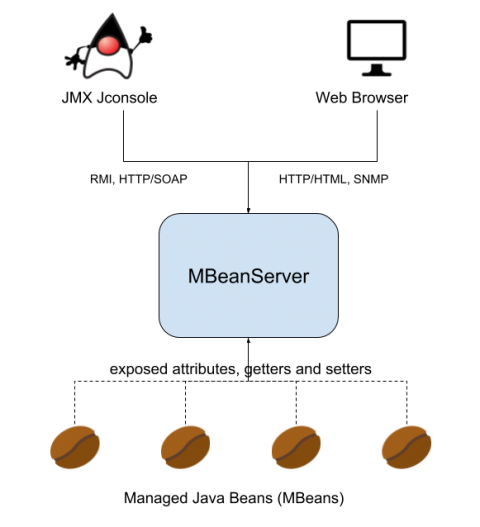Operations | Monitoring | ITSM | DevOps | Cloud
%term
Jenkins in a Nutshell
In many projects, the product development workflow has three main concerns: building, testing, and deployment. Each change to the code means something could accidentally go wrong, so in order to prevent this from happening developers adopt many strategies to diminish incidents and bugs. Jenkins, and other continuous integration tools (CI) are used together with a source version software (such as GIT) to test and quickly evaluate the updated code.
Monitoring Java using JMX and custom metrics
JMX (Java Management Extensions) is a set of specifications conceived to monitor and manage Java applications. To implement the JMX technology, you need to create and register MBeans (Managed Beans) as part of your Java code. Using JMX technology and tools, Java application developers can get the dynamic state of the application and use it for performance tuning, troubleshooting and debugging.
The Future of DevOps Observability: The Evolution of Logging, Monitoring and Metrics
Executing a Monthly cron.monthly on a Specific Date
Cron is a powerful tool in linux-based operating systems to execute jobs at specified intervals. This easy hack makes monthly cron jobs execute at a specific date.
Agile and DevOps: great union for IT
It’s been some time since devops and agile to walk side by side. Combining both has become the basic precept for any IT area, since that way you can get better business results. However, this union still generates much discussion. To better understand the two concepts, it is interesting to note that all of DevOps’ efforts within an organization are geared towards enabling “value delivery” to customers and businesses as quickly as possible.
NIF, World's Largest Laser and Splunk
Analyzing Streaming & Digital TV Audiences: Elastic @ OzTAM
5 Easy Ways to Improve Site Speed
When it comes to loading time, every second counts. In fact, studies show people will never return to your site if it takes longer than a couple of seconds to load. Site speed should be high on your list of performance improvements. On the internet, you really do only get one chance to make a first impression. That’s why speed testing is so important, but it shouldn’t stop at the development phase. Site speed should be continually monitored every step of the way.
What's New in Logz.io - October 2018
Welcome to autumn! Here in New England we anxiously await the transition to winter as our leaves start to change color and the summer heat begins to temper. It’s been a busy few seasons for us – we’ve introduced new features and launched our new community efforts. Want to learn more? Read on!











